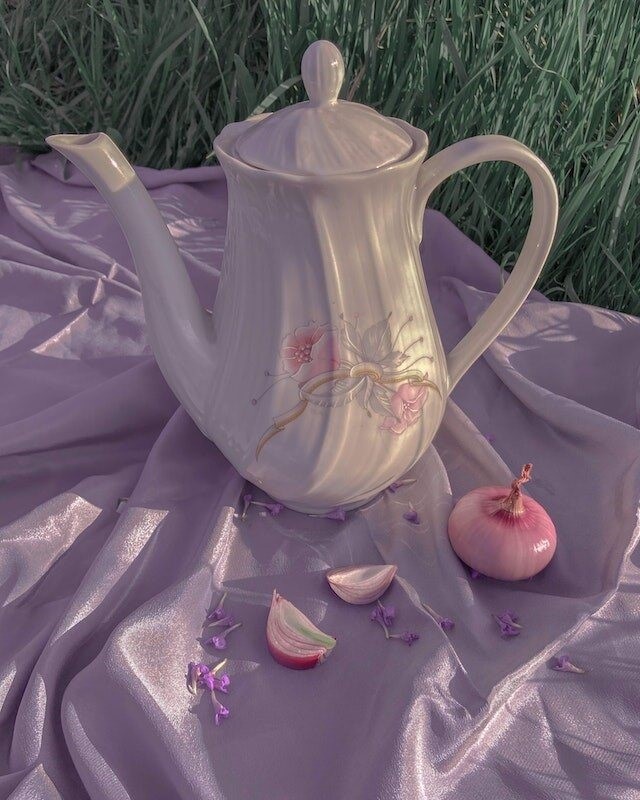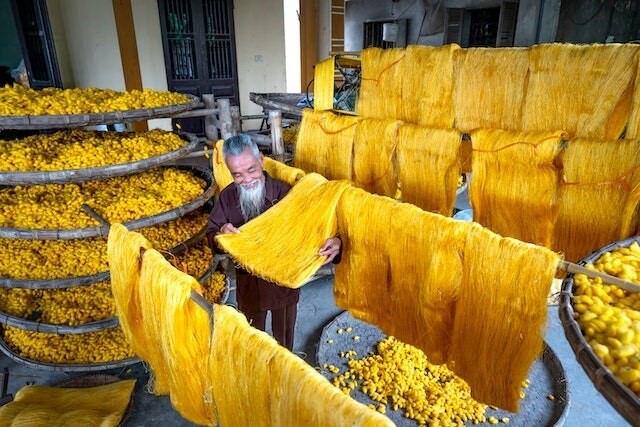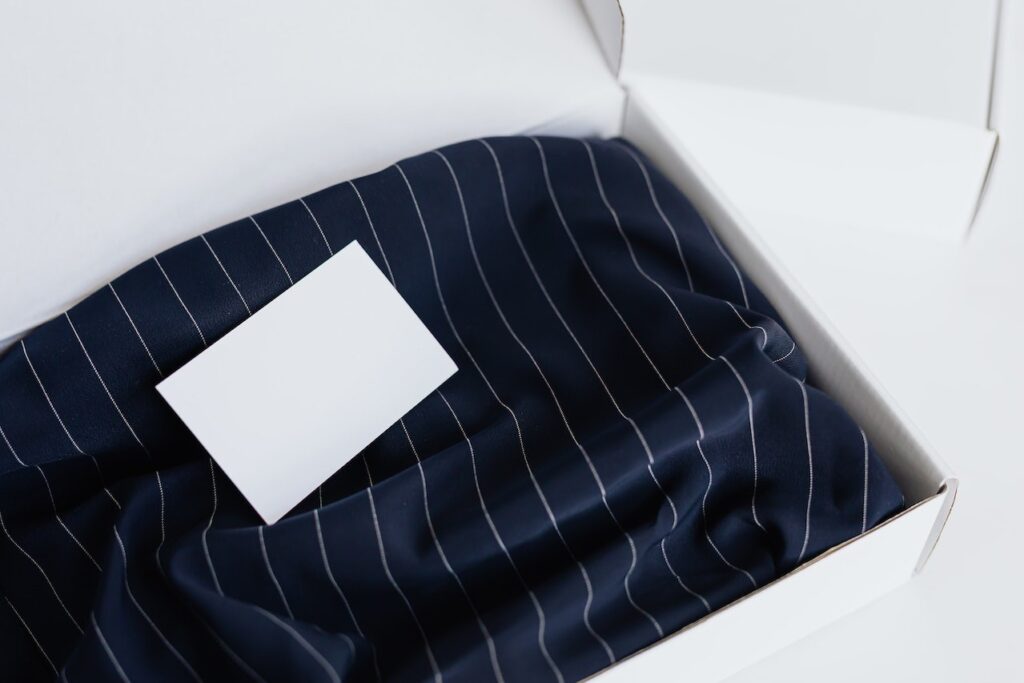Table of Contents
Introduction.
China, known for its mulberry silkworms, is the largest producer of silks, accounting for about 80% of the world’s total silk production. As of 2019, China produced approximately 135,000 tons of silks, followed by India at around 30,000 tons.
These statistics give us a glimpse into the scale and significance of silks production globally. The numbers highlight the immense quantity of silks produced annually by mulberry silkworms and the economic impact of the industry in various countries. Silks are a natural textile.
I have been in the textile and apparel Industry since 1997. This blog will be all about sharing information about silk fabric and brushing up on my knowledge of silk. Detailed information about me can be found on the About Us page.
Silk fabric, made from the fibers of silkworms, is a fascinating cloth that has been prized for centuries for its luxurious feel and stunning appearance. The above-mentioned statistics are eye-opening facts about silk production.
Silk fabric, made from the fibers of silkworm cocoons, is a renowned and luxurious cloth that has fascinated people for centuries. Its softness, sheen, and drape make it highly sought after in fashion, home decor, and medical industries. This remarkable fabric has its origins in China.
Silk fabric, made from the cocoons of silkworms, is not just material; it’s an embodiment of elegance and refinement. From silk garments that grace runways to renowned Chinese silks, this cloth holds a special place in our hearts. Whether it’s mulberry silk or wild silk like tasar or sea silk, each type of silk possesses its own unique characteristics.
Did you know that spider silk, as well as silks produced by silkworms, are even stronger than steel? While we don’t commonly use these silks in our everyday lives, they showcase the incredible potential of natural fibers such as fibroin.
As we explore the wonders of raw silk and unravel the secrets hidden within silkworm cocoons, prepare to be amazed by the versatility and beauty of this extraordinary textile thread.
So let’s embark on a journey into the enchanting realm of silk fabrics and discover how silks, made from the fiber produced by silkworms, have woven their way into our lives throughout history. From the delicate strands of silks to the intricate threads that make up these fabrics, tradition meets innovation in this fascinating world.
Properties and Characteristics of Silk Fabric:

Silk fabric, made from natural fibers produced by silkworms, is a natural protein fiber known as fibroin. Originating in China, silk has been cherished for centuries for its remarkable properties and characteristics such as breathability and strength.
Natural protein fiber with excellent breathability
Silk, derived from the fibers produced by silkworms, is a natural protein fiber composed of fibroin and sericin. This composition gives silk distinct advantages, including excellent breathability.
Unlike synthetic materials, silk allows air to circulate freely through its silks, keeping you cool and comfortable even in warm weather. Silk has a long history in China, where it has been cultivated for centuries.
Lightweight yet strong and durable
One of the most impressive features of silk fabric is its lightweight nature combined with exceptional strength. Despite being delicate to the touch, silk possesses incredible tensile strength.
It can withstand considerable pressure without tearing or losing shape, making it highly durable compared to other fabrics. This characteristic ensures that garments made from silk will last for years without compromising their quality.
Hypoallergenic and gentle on sensitive skin
For individuals with sensitive skin or allergies, silk fabric offers a hypoallergenic solution. Its natural proteins, such as fibroin, create a barrier against common allergens such as dust mites and mold spores.
Silk’s smooth surface reduces friction against the skin, preventing irritation often caused by rougher materials. Its gentle touch makes it an ideal choice for those prone to skin sensitivity or conditions like eczema. The production of silk fabric is particularly prominent in China, where silkworms are cultivated.
Absorbs moisture while retaining warmth
Silk’s unique structure, produced by silkworms in China, allows it to absorb moisture while providing insulation. The fibers have an inherent ability to wick away perspiration from the body, keeping you dry throughout the day.
Furthermore, silk retains heat exceptionally well due to its thermal properties, making it a popular choice for production around the world. It ensures warmth during colder seasons without compromising breathability.
Production Process of Silk Fabric:
Silk production is a fascinating process that involves several steps to transform silkworm cocoons into luxurious silk fabric in the wild. Let’s delve into the intricate production process and discover how this exquisite textile is made in the world.
Sericulture: Raising Silkworms
The journey of wild silk production begins with sericulture, the practice of raising silkworms. Silk producers carefully cultivate mulberry trees, as they serve as the primary food source for wild silkworms. These voracious larvae are fed mulberry leaves until they undergo metamorphosis and spin their cocoons.
Harvesting and Degumming
Once the silkworms complete their transformation, the cocoons are harvested for production. To extract silk fibers from these protective casings, a process called degumming is employed.
The cocoons are immersed in boiling water or exposed to steam to soften the sericin, a natural gum-like substance that holds the cocoon together. This allows for easy extraction of the delicate silk fibers used in production.
Spinning into Threads

After degumming, the silkworm-extracted silk fibers are carefully spun into threads. Traditionally, this was done manually by reeling or twisting individual fibers together using handheld devices called spinning wheels.
Nowadays, modern machinery automates this silkworm production process for increased efficiency. The resulting threads possess incredible strength and luster.
Weaving or Knitting
With the silkworm silk threads ready for production, they can be transformed into fabric through weaving or knitting techniques. In weaving, vertical threads called warp yarns are interlaced with horizontal threads known as weft yarns on a loom to create fabric.
On the other hand, knitting involves interlocking loops of yarn with specialized knitting needles to form a flexible textile structure.
During this stage of silk production, various techniques like dyeing and printing can be applied to enhance the aesthetics of silkworm silk fabrics further. Dyeing infuses vibrant colors onto the fabric while printing allows for intricate patterns and designs to be imprinted.
The production process of silk fabric, involving the silkworm, exemplifies the meticulous craftsmanship required to create this luxurious textile. From sericulture to weaving or knitting, each step requires precision and expertise. The result is a fabric renowned for its softness, sheen, and elegance.
Types of Silk Fabrics:
Silk is a luxurious fabric known for its smooth texture, lustrous sheen, and elegant drape. It has been treasured for centuries in the production industry.
There are several popular types of silk to choose from, each with its own unique characteristics and uses. Let’s explore some of these production options below.
Mulberry Silk
Mulberry silk is the most common type of silk fabric available in the market today. It is produced by Bombyx mori silkworms that feed exclusively on mulberry leaves. This type of silk is highly prized for its exceptional quality and durability. Mulberry silk has a natural white color and can be easily dyed into vibrant shades.
Charmeuse
Charmeuse is a luxurious satin-like fabric made from silk fibers. It features a glossy front surface and a matte back, creating an exquisite contrast. This type of silk drapes beautifully and feels incredibly soft against the skin. Charmeuse is often used to create elegant evening gowns, lingerie, and flowing blouses.
Chiffon
Chiffon is a lightweight and sheer fabric that adds an ethereal touch to any garment or accessory. Made from fine silk fibers, chiffon has a delicate drape that creates graceful movement when worn. It is commonly used in flowy dresses, scarves, and bridal veils due to its romantic appeal.
Dupioni
Dupioni silk stands out with its distinctive texture characterized by irregular slubs or knots in the fabric. These slubs give Dupioni its unique charm and create an interesting visual effect when light reflects off them. This type of silk is commonly used for formal wear such as suits, dresses, and jackets.
Consider the specific qualities you desire:
- If you’re looking for a versatile and durable silk fabric, mulberry silk is an excellent choice.
- For a luxurious and elegant look, silk textiles such as charmeuse made from Chinese silk are perfect with their smooth satin finish. The use of high-quality silk thread adds to the overall beauty and durability of these tasar silk fabrics.
- If you want to add a delicate and airy touch to your outfit, chiffon made from silk thread or silk yarn will provide the desired effect. Whether it’s silk textiles or Chinese silk, incorporating this luxurious fabric into your ensemble will surely elevate your style.
- And if you’re after a textured fabric that adds visual interest, wild silk, also known as Dupioni, will not disappoint. This type of silk is produced by silk moths in the silk industry and is highly sought after for its unique texture.
Whether you’re creating stunning garments or adding a touch of luxury to your home decor, understanding the different types of silk fabrics available allows you to make informed choices.
Each type has its own unique characteristics that cater to various preferences and styles. So go ahead and explore the world of silk fabrics – there’s something for everyone!
Usage Tips for Silk Fabric:
Silk fabric is known for its luxurious feel and elegant appearance. Whether you have a silk blouse, dress, or bedsheet, it’s important to know how to properly care for this delicate material. Here are some essential usage tips to ensure that your silk fabric remains in pristine condition for years to come.
Avoid direct sunlight as it can fade the color of silk fabric over time.
Silk fabric is susceptible to sun damage, which can cause the colors to fade and the fabric to weaken. To protect your silk garments from direct sunlight, store them in a cool and dark place when not in use. If you’re wearing silk outdoors on a sunny day, consider using an umbrella or a wide-brimmed hat to shield it from harmful UV rays.
Handwashing or dry cleaning is recommended to maintain the integrity of silk.
Handwashing or professional dry cleaning are the preferred methods. Machine washing can be too harsh on delicate silks and may result in shrinkage or damage.
Before washing by hand, fill a basin with lukewarm water and add a mild detergent specifically designed for delicate fabrics. Gently agitate the garment in soapy water and then rinse thoroughly with clean water.
Use a mild detergent specifically designed for delicate fabrics when washing silk.
Choosing the right detergent is crucial when washing silk fabric. Opt for a gentle detergent that is specially formulated for delicate fabrics like silk.
Harsh chemicals found in regular laundry detergents can strip away the natural luster of your silk garments and leave them looking dull. Look for detergents labeled as “silk-friendly” or “delicate wash” to ensure proper care.
Iron on low heat or use a steamer to remove wrinkles without damaging the fabric.
Silk fibers are sensitive to heat, so it’s important to take caution when ironing your silk garments. Set your iron to the lowest heat setting or use the silk setting if available.
Always place a clean cloth or a pressing cloth between the iron and the silk fabric to prevent direct contact. Alternatively, you can use a steamer to remove wrinkles from your silk garments without risking damage.
By following these usage tips, you can prolong the lifespan of your silk fabric and keep it looking as good as new. Remember to store your silk items away from direct sunlight, opt for handwashing or dry cleaning, use gentle detergents specifically designed for delicate fabrics, and take care when ironing by using low heat or a steamer. With proper care, your silk fabric will continue to exude its timeless elegance for years to come.
Sustainable Aspects of Silk Fabric:
Silk fabric is a natural textile that has been cherished for centuries due to its luxurious feel and beautiful luster. But did you know that silk also boasts several sustainable aspects?
Silkworms and Sericulture:
Sericulture plays a crucial role in maintaining a sustainable process. Silkworms, the source of this natural protein fiber, are typically raised in controlled environments without harming natural ecosystems.
These silkworms feed solely on mulberry leaves, which are abundant and renewable resources. By ensuring their food supply comes from mulberry trees rather than deforestation or other harmful practices, silk production helps preserve our environment.
Water Conservation:
The production process of silk requires significantly less water compared to other textile fibers like cotton. This makes silk an environmentally friendly choice for those concerned about water scarcity.
While cotton demands substantial amounts of water throughout the cultivation, harvesting, and processing stages, silkworm rearing consumes minimal water resources. By opting for silk fabric, consumers indirectly contribute to conserving our planet’s most precious resource.
Biodegradability:
One remarkable aspect of silk fabric is its biodegradability. Unlike synthetic materials that take hundreds of years to decompose, silk naturally breaks down over time when discarded responsibly.
This reduces the environmental impact at the end of its lifecycle since it does not contribute to long-lasting waste accumulation in landfills or oceans. The ability of silk fabric to return harmlessly back into nature aligns with sustainable practices and promotes a cleaner planet for future generations.
Recycling and Upcycling Opportunities:
In addition to being biodegradable, silk fabric offers recycling and upcycling possibilities. Instead of disposing of old or damaged silk garments, they can be recycled into new products such as accessories or home furnishings.
Upcycling, on the other hand, involves transforming silk fabric into entirely different items, giving it a new lease of life. By embracing these practices, we prolong the usefulness of silk fabric and minimize waste generation.
Care Tips for Silk Fabric:
Store silk garments in a cool, dry place: To ensure the longevity of your silk garments, it is essential to store them properly. Find a cool and dry area away from direct sunlight and moisture. Excessive heat and humidity can cause damage to the delicate fibers of silk fabric, leading to discoloration or even mold growth.
Avoid storing silk items in basements or attics where temperature fluctuations are common. Instead, opt for a closet or drawer that provides a stable environment for your cherished pieces.
Avoid hanging silk items: While hanging clothes may be convenient for most fabrics, it’s not the best option for silk garments. The weight of the fabric can cause stretching and distortion over time.
To maintain the shape and integrity of your silk items, fold them neatly and store them flat instead. This will help prevent any unnecessary strain on the delicate threads while ensuring they remain in pristine condition.
Test cleaning products before applying: Caution is key. Before using any cleaning products on your precious silks, it’s crucial to test them on a small inconspicuous area first.
Apply a small amount of the cleaning product on an inside seam or hemline and observe if there are any adverse reactions such as color fading or fabric damage. This way, you can avoid potential disasters and ensure that the cleaning product is safe to use on the entire garment.
Handle stained silk with care: Accidents happen, and sometimes our beloved silk garments end up with unsightly stains. When dealing with stains on silk fabric, it’s important to handle them delicately to prevent further damage.
Start by gently blotting the stain with a clean white cloth or paper towel to absorb any excess liquid without rubbing it into the fabric. Avoid using harsh chemicals or bleach as they can weaken the fibers or alter the color of your garment.
If you’re unsure about the best approach or the stain seems particularly stubborn, it may be wise to seek professional stain removal services.
Professional cleaners have specialized techniques and products specifically designed for silk fabric, ensuring that your garment receives the utmost care and attention.
Conclusion
In conclusion, understanding the key aspects of silk fabric can greatly enhance your appreciation for this luxurious material. By exploring its properties and characteristics, you can grasp why silk is highly sought after in the fashion industry. Learning about the production process sheds light on the intricate craftsmanship involved in creating silk fabric.
Different types of silk fabrics offer unique textures and appearances, allowing you to select the perfect option for your desired garment or home decor item. Taking note of useful tips will help you handle silk fabric with care and maintain its pristine condition over time.
Moreover, considering the sustainable aspects of silk fabric highlights its eco-friendly qualities compared to synthetic alternatives. With proper care, silk fabric can be a long-lasting investment that reduces environmental impact.
To ensure your silk fabric remains in optimal condition, following recommended care tips is crucial. These guidelines will help preserve the delicate nature of silk and prevent any damage during cleaning or storage.
Incorporating these insights into your knowledge about silk fabric empowers you to make informed decisions when purchasing or using this exquisite material.
Whether it’s for clothing, accessories, or interior design purposes, knowing how to handle and appreciate silk fabric adds value to your overall experience.
So go ahead and embrace the elegance of silk in your lifestyle choices. Explore different types of silks, experiment with various designs, and enjoy the luxurious feel that only pure silk can provide.
FAQs
Can I wash my silk fabric at home?
It is generally recommended to hand wash or dry clean silk fabric to avoid potential damage caused by machine washing.
How do I remove stains from my silk fabric?
To remove stains from silk fabric, gently blot the affected area with a mild detergent solution or seek professional assistance for stubborn stains.
Can I iron my wrinkled silk fabric?
Yes, but always use a low heat setting on your iron and place a cloth between the iron and silk fabric to prevent direct contact.
Are all silk fabrics suitable for every type of clothing?
Different types of silk fabrics have varying weights, textures, and drapes, making them more suitable for specific garments. Consider the intended use and desired effect when selecting a silk fabric.
How can I store my silk fabric to maintain its quality?
Store your silk fabric in a cool, dry place away from direct sunlight. Avoid hanging it for extended periods to prevent stretching or distortion.
Are silkworms killed to make silk?
Yes, silkworms are killed to make silk. The process of obtaining silk involves boiling the cocoons of silkworms to dissolve the sericin protein that holds the fibers together. This kills the silkworms inside the cocoons. After boiling, the silk fibers are then spun into threads and used to create various silk fabrics.


